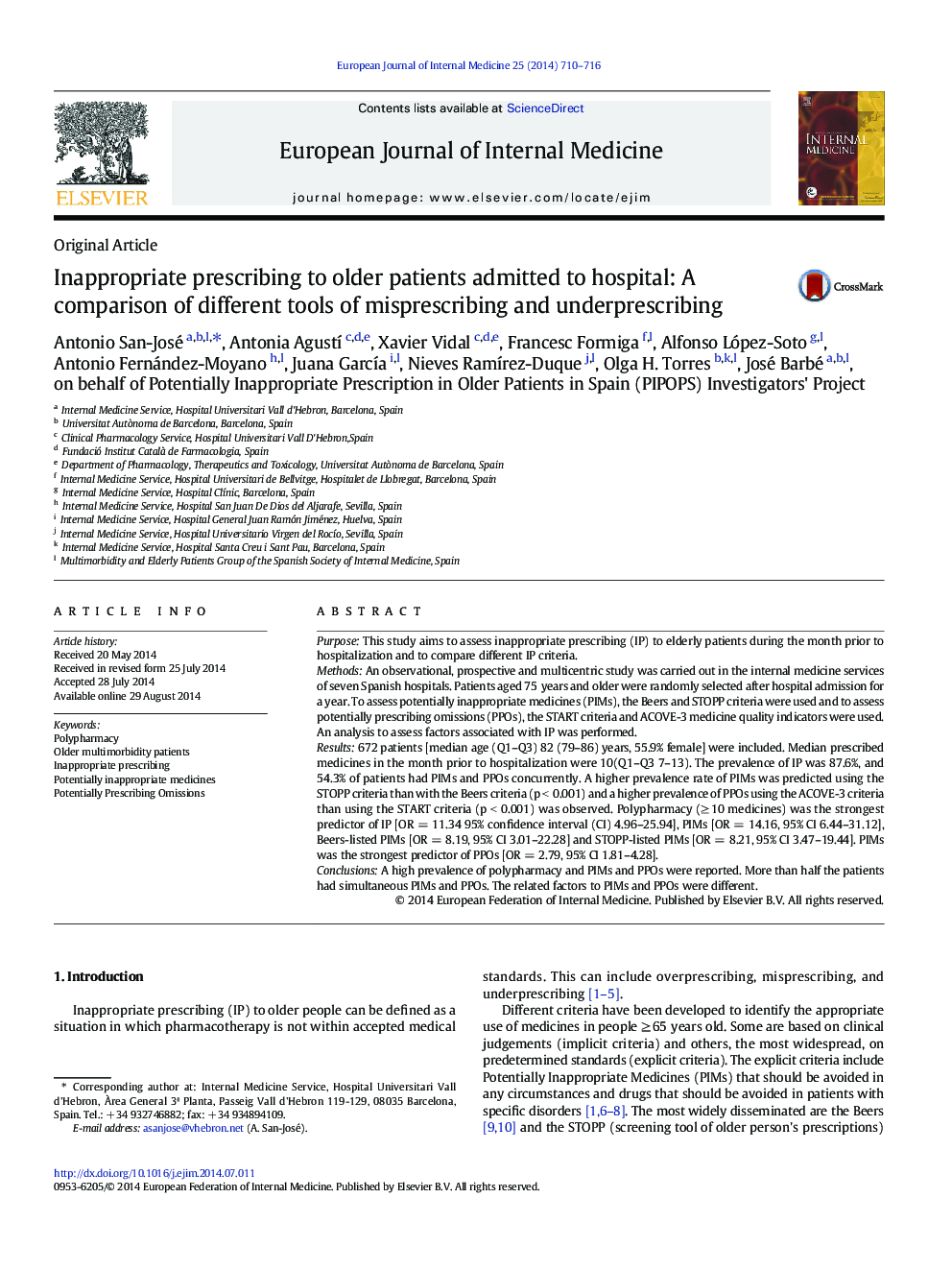| کد مقاله | کد نشریه | سال انتشار | مقاله انگلیسی | نسخه تمام متن |
|---|---|---|---|---|
| 3466172 | 1596552 | 2014 | 7 صفحه PDF | دانلود رایگان |
• A high prevalence of polypharmacy and of PIMs and PPOs were reported in the study.
• More than half of our study population had simultaneous PIMs and PPOs.
• The risk factors associated to PIMs differed from those associated with PPOs.
• The STOPP criteria detect a higher prevalence rate of PIMs than the Beers criteria.
• The ACOVE-3 criteria detect a higher prevalence of PPOs than the START criteria.
PurposeThis study aims to assess inappropriate prescribing (IP) to elderly patients during the month prior to hospitalization and to compare different IP criteria.MethodsAn observational, prospective and multicentric study was carried out in the internal medicine services of seven Spanish hospitals. Patients aged 75 years and older were randomly selected after hospital admission for a year. To assess potentially inappropriate medicines (PIMs), the Beers and STOPP criteria were used and to assess potentially prescribing omissions (PPOs), the START criteria and ACOVE-3 medicine quality indicators were used. An analysis to assess factors associated with IP was performed.Results672 patients [median age (Q1–Q3) 82 (79–86) years, 55.9% female] were included. Median prescribed medicines in the month prior to hospitalization were 10(Q1–Q3 7–13). The prevalence of IP was 87.6%, and 54.3% of patients had PIMs and PPOs concurrently. A higher prevalence rate of PIMs was predicted using the STOPP criteria than with the Beers criteria (p < 0.001) and a higher prevalence of PPOs using the ACOVE-3 criteria than using the START criteria (p < 0.001) was observed. Polypharmacy (≥ 10 medicines) was the strongest predictor of IP [OR = 11.34 95% confidence interval (CI) 4.96–25.94], PIMs [OR = 14.16, 95% CI 6.44–31.12], Beers-listed PIMs [OR = 8.19, 95% CI 3.01–22.28] and STOPP-listed PIMs [OR = 8.21, 95% CI 3.47–19.44]. PIMs was the strongest predictor of PPOs [OR = 2.79, 95% CI 1.81–4.28].ConclusionsA high prevalence of polypharmacy and PIMs and PPOs were reported. More than half the patients had simultaneous PIMs and PPOs. The related factors to PIMs and PPOs were different.
Journal: European Journal of Internal Medicine - Volume 25, Issue 8, October 2014, Pages 710–716
